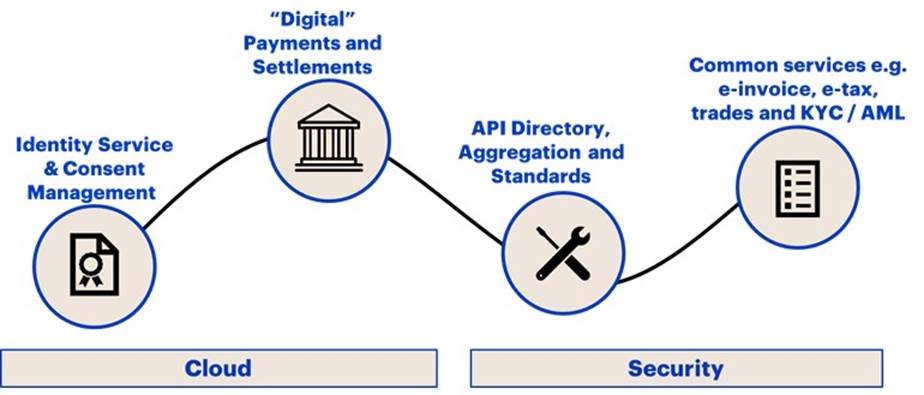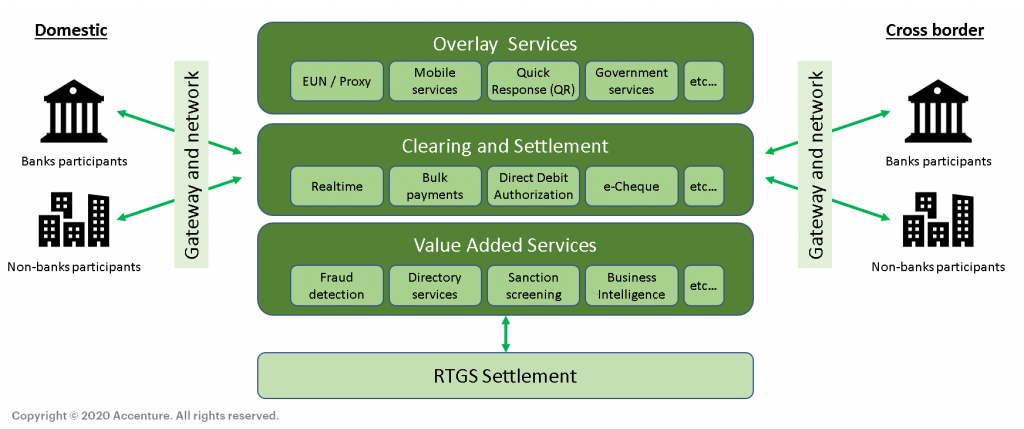Other parts of this series:
- Building a digital monetary authority for a digital age
- Next-gen central banking | Pillar 1: Harness the power of data
- Next-gen central banking | Pillar 2: Enable and drive innovation
- Next-gen central banking | Pillar 3: Drive efficiency
- Next-gen central banking | Pillar 4: Communicate effectively
- Next-gen central banking | Part 5: Building the workforce of the future
Pillar 3: Drive efficiency
 In our introductory report, we noted that it is crucial for central banks to drive efficiencies in a range of areas, both externally (to ensure a vibrant and resilient financial services sector) and internally, to ensure that central banks can deliver the relevant services to the industry in an agile and nimble manner.
In our introductory report, we noted that it is crucial for central banks to drive efficiencies in a range of areas, both externally (to ensure a vibrant and resilient financial services sector) and internally, to ensure that central banks can deliver the relevant services to the industry in an agile and nimble manner.
Internally, central banks should look to drive efficiency by:
- Establishing a culture of innovation and continuous improvement across the bank, going beyond just the dedicated innovation of fintech departments
- Improving communication, and hence the decision-making process, by embedding an agile mindset from leadership to execution
- Revising capabilities (people, processes and infrastructure) and ensuring a more agile approach by implementing DevSecOps and establishing an elastic workforce. Additionally, defining a future-oriented sourcing strategy and anticipating changes more readily will assist in reacting to such changes quickly.

In this way, central banks will ensure that their services are secure, resilient and future-proofed—and that they align with technological innovations and advancements.
Balancing security and innovation
When it comes to driving efficiencies across FS externally, most central banks are seeking a balance between enabling innovation while building a secure and resilient infrastructure for themselves and the market. Establishing clear standards, guidelines and centralized value-added services across the industry will be paramount—for the cloud, for example, as well as for security, APIs and messaging to allow seamless collaboration with financial institutions (FIs) and non-FI players in the industry.
We have observed four main enablers that we regard as key to a digital economy and with which central banks can help: identity services and consent management; digital payments and settlements; API directories, aggregation and standards; and common services such as e-invoicing, e-tax, trades, and know-your-customer (KYC) and anti-money laundering (AML).
In addition, these four enablers should be supported by three foundational guidelines and standards that apply across the industry: the cloud, connectivity (or messaging) and security.

Enablers of the digital economy
Identity services and consent management
These are fundamental because they unlock value and experiences, enabling businesses and individuals to interact seamlessly and in a trusted way. That creates a better user experience, generates cost savings (cutting KYC and customer onboarding costs, for example), and boosts trust in business. Having a centralized consent management system in place ensures transparency and efficiency.
Singapore leads in this area, with SingPass, an online identity and consent management service that lets individuals access government e-services—and which is now being extended to financial services and other e-commerce services, and CorpPass, which does the same for organizations. Singapore’s MyInfo service lets individuals manage their personal data, consent to and control how it is shared, and benefit from reduced online form-filling and verification requirements. With MyInfo, citizens can open a bank account seamlessly without the traditional KYC documentation and processes.
Digital payments and settlements
This covers the wide range of payments infrastructure ranging from instant payments, mobile payments (including digital wallets) and QR payments, as well as interbank and securities settlements like RTGS. Significant efforts are being made to enhance each of these payments capabilities domestically within countries as well as cross-border with other jurisdictions.

There are many such domestic payments infrastructure programs underway. Payments Canada’s Modernization program is a standout example of such an initiative to improve transaction speeds, faster payments capability and a new core clearing and settlement system, among other benefits. It also enables more innovations across payments, financial services and e-commerce.
There are also efforts to further harmonize the different payments and settlement mechanisms into a more modular solution across the industry. By using messaging such as the ISO 20022 standard, the industry is being encouraged to move from bespoke to modular architecture, as the diagram below shows.

API directories, aggregation and standards
APIs are central to driving efficiencies, and there are a range of measures central banks can take here, including setting up a registry service, creating an API aggregation service to enforce a single standard that must be used for innovation, and drafting standard API specifications.
Europe’s PSD2 directive, for example, regulates new types of payments institutions and makes banks open their systems via APIs. Our colleagues Sulabh Agarwal and Amit Mallick have separately explained the impact of Open Banking on both payments and banking globally, as well as in Europe.
Common services
Finally, there are various projects underway to standardize and streamline services that are common across the industry to achieve overall industry-level efficiency. Standardized and centralized industry utilities will ensure more efficient processing in a range of areas including KYC, AML, e-invoicing and e-tax, as well as cybersecurity.
Esal—the e-invoicing platform rolled out by the Saudi Arabian Monetary Authority in 2018—is an example of an innovation that has revolutionized payments practices in the country. Incorporating factoring, it reduces transaction costs and promotes organizational efficiency by simplifying the invoicing process between suppliers, government entities and business sectors. India’s centralized KYC service is another, with the Reserve Bank of India saying in early 2020 that banks and other lenders could use video capture to remotely complete KYC requirements.
Further steps
Central banks need to determine what efficiency means and then structure how best to measure goals in order to chart progress. Having done so, they must assess which sourcing option is appropriate: insourcing and outsourcing each have benefits and drawbacks, with hybrid staff augmentation, liquid workforce and selective sourcing options also available.
By driving efficiency internally and externally, central banks can strengthen and future-proof their own services and systems as well as those of the broader financial sector, counter the increase in security threats and meet the increased demands of the industry.
Our next blog will look at the fourth pillar: improving communication and engagement with the FS industry by using more holistic digital services and two-way communications.











